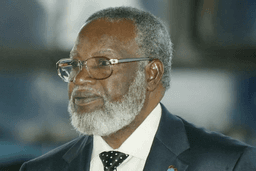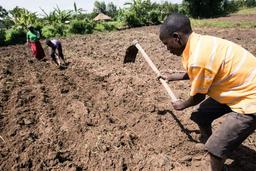Chad
Chad is a country located in north-central Africa. It is landlocked and shares borders with Libya to the north, Sudan to the east, the Central African Republic to the south, Cameroon and Nigeria to the southwest, and Niger to the west.


19 million

North-central Africa

1.28

UTC +1

French ,Arabic

franc (XAF)

Islam,Christianity

President Mahamat Idriss Déby Itno
Brief
Chad is a country in north-central Africa, landlocked and bordered by Libya, Sudan, the Central African Republic, Cameroon, Nigeria, and Niger. Its geography varies widely, from the vast Sahara Desert in the north to more fertile regions in the south. The capital city is N'Djamena. Chad has a population of around 17 million people and is known for its ethnic and linguistic diversity, with French and Arabic as official languages, alongside numerous indigenous languages. The economy is primarily based on agriculture, livestock, and oil production, but it remains one of the poorest and least developed countries due to ongoing political instability, drought, and poverty. Chad gained independence from France in 1960, and since then it has experienced multiple civil conflicts and political upheavals. Culturally, Chad reflects a mixture of African, Arab, and French influences due to its diverse ethnic groups and colonial history.
Outside of the geographic context, “Chad” is also a term widely recognized in internet culture as slang for a young man who is conventionally attractive, confident, and socially successful, especially with women. This stereotype emerged mainly from online communities and memes, portraying the “Chad” as the archetype of an alpha male, often contrasted with less confident or socially awkward individuals. The term can be used both humorously and ironically.
Additionally, Chad is a common male first name in English-speaking countries, originating from the Old English “Ceadda,” meaning “battle” or “warrior.” Another lesser-known meaning is the small bits of paper called “chads” produced when holes are punched in paper, famously referenced during the 2000 U.S. presidential election recount, where “hanging chads” caused confusion and controversy.


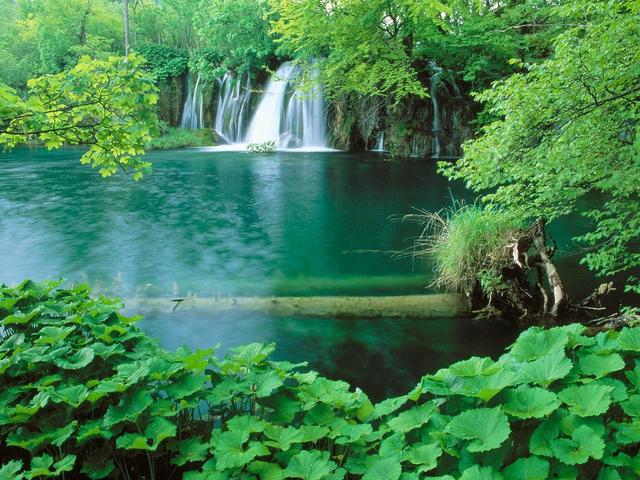

National anthem
Cultural Life
Cultural milieu
Chad's culture is highly diverse, shaped by over 200 ethnic groups, a mix of Arab-Islamic and Sub-Saharan African influences, and its colonial past under French rule. The north is predominantly Muslim with Arab cultural traits, while the south is more Christian and animist, maintaining traditional African customs. French and Arabic are official languages, but many local languages are spoken daily.
Cultural life is rooted in oral storytelling, music, dance, and strong family and clan ties. Traditional roles and customs remain central, especially in rural areas. Despite poverty and political challenges, community events like festivals, weddings, and religious holidays are vibrant and deeply significant. Food, clothing, and social customs vary widely by region, reflecting the country's rich ethnic and geographic diversity.
In essence, Chad’s cultural environment is complex and resilient, blending ancient traditions with modern influences across a divided but culturally rich society.
Daily life and social customs
Daily life in Chad is shaped by tradition, community, and a strong connection to the land. Most people live in rural areas where farming and herding define the rhythm of the day. Tasks like tending fields, collecting water, preparing meals over open fires, and caring for livestock are central, and days begin early, often before sunrise. In urban areas like N'Djamena, life is more fast-paced but still grounded in traditional values, with people working in markets, small businesses, and government jobs, though infrastructure remains limited and access to electricity or clean water is inconsistent.
Family and community are at the heart of Chadian society. Extended families often live together, and elders are respected and consulted on important matters. Hospitality is a deeply rooted custom; guests are always welcomed with food or sweet tea, and turning down such gestures can be seen as rude. Greetings are important and often elaborate, involving handshakes, inquiries about well-being, and sometimes bows, especially toward elders. Social norms are conservative, with clearly defined gender roles: men are typically seen as heads of households and providers, while women manage domestic duties and also contribute significantly to agricultural and market work. Polygamy is common, especially in Muslim communities, and women’s roles are largely shaped by tradition, though this varies by region.
Religion plays a central role in everyday life. In the predominantly Muslim north and center, daily prayers, fasting during Ramadan, and Islamic holidays are strictly observed. In the Christian and animist south, church attendance, traditional ceremonies, and communal festivals are integral to life. Clothing is modest and traditional: men often wear long robes or tunics with turbans or caps, while women wear bright, patterned wraps and headscarves, reflecting both cultural pride and religious values. Meals are typically shared from a communal bowl, with millet or sorghum dough eaten by hand, accompanied by sauces, vegetables, or meat when available.
Despite widespread poverty and limited infrastructure, Chadian society is resilient and cohesive. Life is rooted in a sense of duty to family and community, and major events like weddings, funerals, and naming ceremonies are vibrant, music-filled affairs that reinforce social bonds. In daily life, there is a quiet dignity, a strong work ethic, and a profound respect for tradition that holds communities together in the face of ongoing challenges.
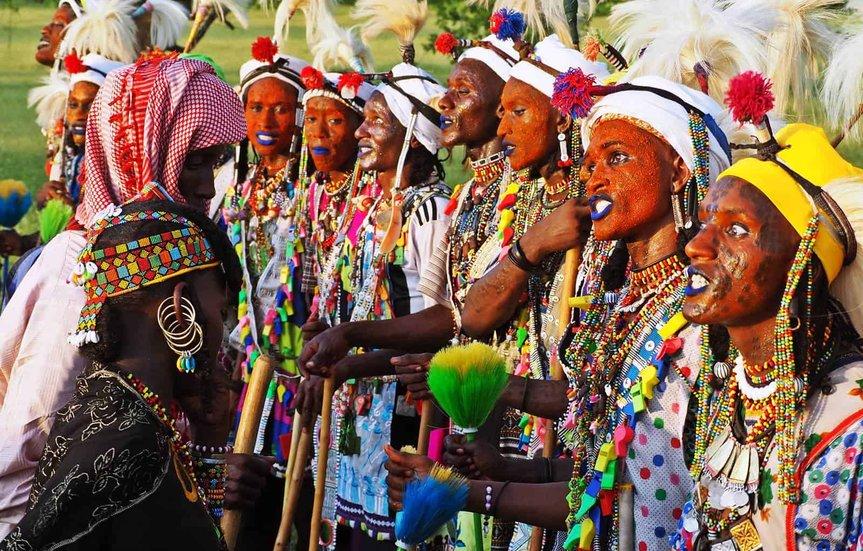




Cuisine
Cuisine in Chad reflects its geographic and cultural diversity, combining influences from Sub-Saharan Africa, North Africa, and the Arab world. Meals are typically simple, hearty, and based on locally available ingredients like millet, sorghum, rice, okra, peanuts, and various meats or fish. In rural areas, food is largely homegrown and seasonal, while urban areas may have more variety due to trade and imports.
A staple food across the country is "la boule", a thick porridge or dough made from millet or sorghum, usually eaten with sauces made from vegetables, meat, or dried fish. These sauces are often flavored with local ingredients like okra, tomatoes, onions, and groundnuts. Rice is also common, particularly in the south, and may be served with similar sauces or stews.
Meat—such as beef, goat, chicken, or lamb—is eaten when available, often grilled or cooked in stews. In the north, where pastoralist communities live, camel and goat meat are more common. Fish from Lake Chad is an important protein source in the lake region and is typically dried, smoked, or grilled.
Tea drinking is a widespread social custom, especially in the north, where strong, sweet green tea is brewed and shared in multiple rounds. Karkandji (hibiscus tea) is also popular. Alcohol is less common due to Islamic influence in the north, but in the south, traditional beers made from millet or sorghum may be consumed.
Snacks and street foods include fried dough balls, grilled meats, and flatbreads. Food customs are often communal, with people sitting around a shared bowl and eating with the right hand. Overall, Chadian cuisine is modest but flavorful, shaped by necessity, tradition, and regional availability.




Music
Music in Chad is a vital part of cultural expression, social life, and storytelling, deeply rooted in the country’s ethnic diversity and traditional practices. With over 200 ethnic groups, musical styles vary widely across regions but often serve similar purposes: marking ceremonies, celebrating events, and preserving oral history.
Traditional Chadian music relies heavily on percussion, string instruments, and call-and-response vocals. Drums of various types are central, especially in the south, where rhythmic dances accompany weddings, festivals, and community gatherings. The kundi (a traditional harp), balafon (a wooden xylophone), and lutes or fiddles are common in both the north and south. In nomadic and Arab-influenced communities of the north, instruments like the oud (a short-necked lute) and flutes are used in more melodic, vocal-centered performances.
Songs often tell stories, pass down history, or express communal values, with lyrics in local languages, Arabic, or French. Music is an integral part of rituals such as weddings, naming ceremonies, funerals, and initiation rites. Women frequently participate in singing and dancing, especially in the south, where group performances play a key role in social life.
Modern Chadian music blends traditional styles with Afropop, reggae, hip-hop, and R&B, particularly in urban centers like N'Djamena. Artists use local instruments alongside electronic beats to create new sounds, often addressing social and political issues. Despite limited access to recording facilities or wide media reach, music remains a powerful form of expression and identity.
Overall, Chadian music is both a celebration of cultural heritage and a dynamic, evolving art form that connects the past with the present.




The arts
The arts in Chad are deeply rooted in tradition and community life, reflecting the country’s ethnic diversity and cultural heritage. Traditional crafts like wood carving, pottery, weaving, beadwork, and leatherwork are common, often serving functional or ceremonial purposes. Textile arts and jewelry-making are especially prominent among women and nomadic groups.
Performance arts—music, dance, and oral storytelling—are central to cultural expression and are widely practiced during rituals, festivals, and social events. While modern visual arts like painting and sculpture are less developed due to limited resources, some urban artists are exploring contemporary forms.
Overall, the arts in Chad are a living tradition, closely tied to identity, social life, and spirituality, and are passed down through generations.





People
Ethnic groups
Chad is home to more than 200 ethnic groups, making it one of the most culturally diverse countries in Africa. These groups are generally divided along geographic and linguistic lines: the north is inhabited mainly by Muslim nomadic and semi-nomadic groups such as the Toubou, Zaghawa, and Gorane; the central region features a mix of sedentary Muslim communities including Arabs, Kanembu, and Baguirmi; and the south is predominantly Christian or animist, with agricultural ethnic groups like the Sara (the largest ethnic group), Ngambaye, Moundang, and Mbaye. Arabic and French are the official languages, but over 120 local languages are spoken across the country. Religion and ethnicity often overlap, contributing to Chad’s complex social and political landscape, where historical power struggles have been shaped by these divisions.
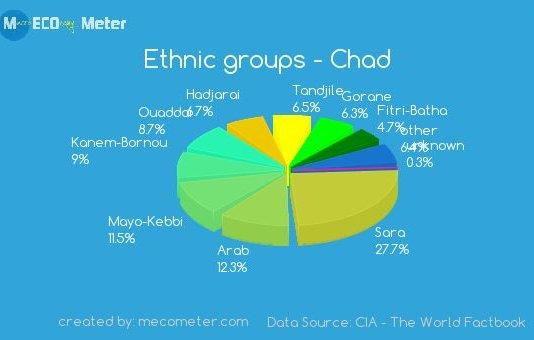




Religion
Religion in Chad is closely tied to the country’s ethnic and regional diversity. The population is roughly 55% Muslim, primarily in the north and east, where Islam is the dominant faith among groups like the Arabs, Zaghawa, and Toubou. About 40% of Chadians are Christians, concentrated mainly in the south, among ethnic groups such as the Sara, Ngambaye, and Moundang. Christianity was introduced during the colonial era and includes both Roman Catholics and various Protestant denominations. The remaining 5% follow traditional African religions, often blending spiritual beliefs with Christian or Islamic practices. Although Chad is constitutionally a secular state, religion plays a significant role in social identity and, at times, in national politics
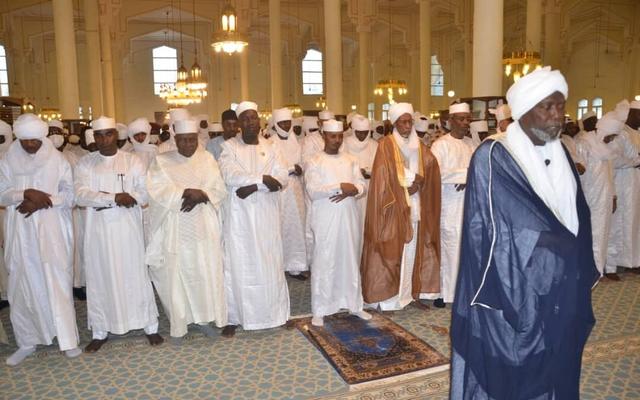
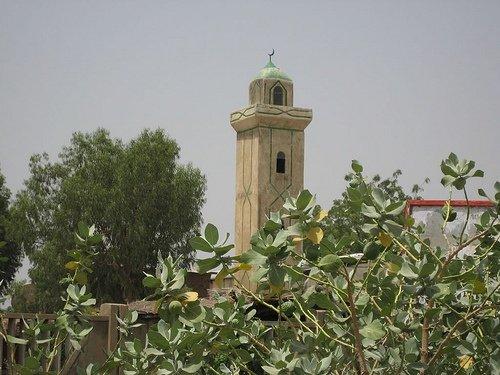


Settlement patterns
Settlement patterns in Chad are shaped by geography, climate, and traditional lifestyles. The northern region, dominated by the Sahara Desert, is sparsely populated and mainly inhabited by nomadic groups like the Toubou and Zaghawa, who move with their livestock. In the central Sahelian zone, settlements become more semi-permanent, with towns and villages clustered around water sources, and inhabited by groups such as the Arabs and Kanembu. The southern region, which has more fertile land and reliable rainfall, is the most densely populated, hosting a majority of sedentary farming communities like the Sara and Moundang. Urbanization is limited, with N'Djamena, the capital, being the largest urban center and hub for political, economic, and administrative activity. Most of the population still lives in rural areas, and settlement patterns continue to reflect the country’s ethnic, cultural, and environmental diversity.

The northern region of Chad is part of the Sahara Desert and is characterized by an arid, harsh climate with very low rainfall and extreme temperatures. As a result, it is sparsely populated, with settlements concentrated around rare water sources such as oases. The region is predominantly inhabited by nomadic and semi-nomadic ethnic groups, including the Toubou, Zaghawa, and Gorane, who rely on pastoralism—raising camels, goats, and sheep—as their main livelihood. Due to the difficult environment, permanent infrastructure is limited, and many people move seasonally in search of pasture and water. Islam is the dominant religion in the north, and traditional clan structures still play a strong role in community life. Despite its isolation, the region has been strategically important, both economically (for trade routes) and politically (due to historical conflicts and border proximity with Libya and Sudan).
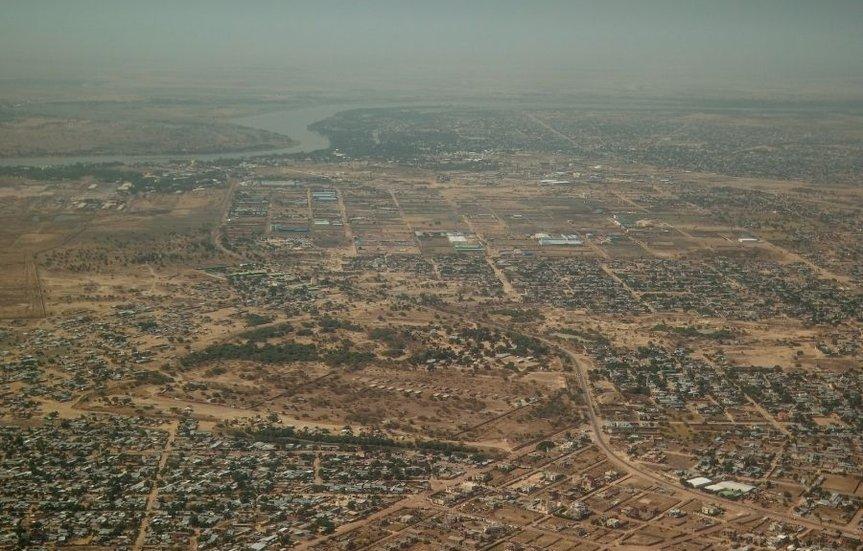
The Central Sahelian zone of Chad lies between the arid north and the more fertile south, serving as a transitional region in both climate and culture. It has semi-arid conditions, with limited but more reliable rainfall compared to the north, allowing for agro-pastoralism—a mix of farming and livestock rearing. This region is more densely populated than the north and hosts several important towns and trade centers. Ethnic groups in this zone include the Kanembu, Baguirmi, and Shuwa Arabs, many of whom are Muslim and traditionally engaged in trade, animal husbandry, and small-scale agriculture. Settlements are typically permanent or semi-permanent villages, often located near water sources like Lake Chad or seasonal rivers. The central region also acts as a cultural and economic crossroads, connecting nomadic populations of the north with the sedentary farming communities of the south.

The southern region of Chad is the most fertile, densely populated, and agriculturally productive part of the country. It receives the highest rainfall, supporting sedentary farming and enabling the cultivation of crops such as sorghum, millet, cotton, and groundnuts. This region is home to numerous ethnic groups, including the Sara, Ngambaye, Moundang, and Mbaye, most of whom practice Christianity or traditional African religions. Settlements in the south are primarily permanent villages and towns, with better infrastructure, schools, and health services compared to other parts of Chad. The southern region has historically been more influenced by Western education and administration, especially during the colonial period. Due to its agricultural base and higher population density, the south plays a critical role in Chad’s food production and economy.
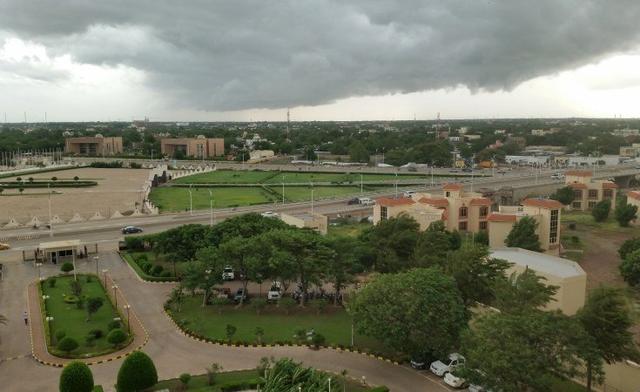
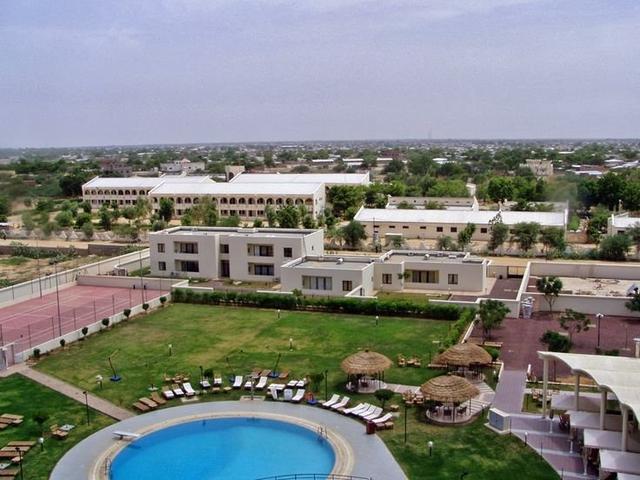


Demographic trends
Chad's population in 2025 is approximately 20.7–21.0 million, showing a strong annual growth rate of around 3.5–4.3% one of the highest in the world .Over 75% of Chadians live in rural areas, with only about 22–24% residing in urban centers .
The population is extremely youthful, with a median age of 15.8 years, and nearly half under the age of 15 .High fertility rates (around 6.2 children per woman in 2023, projected to decline to about 4.8 by 2043) have led to this demographic structure. As a result, Chad has a very high dependency ratio, with a large portion of the population mostly youth depending on a relatively small working-age cohort .
By 2043, Chad is expected to remain among the countries with the youngest populations globally, making it imperative to expand investments in education, health services, and job creation to harness the potential demographic dividend
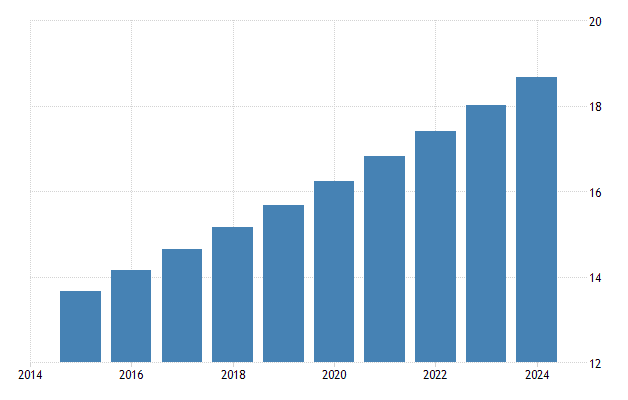
Touristic Cities
N’Djamena – The Capital’s Cultural Core
Chad’s bustling capital lies on the banks of the Chari River and blends modern life with traditional markets and architectural charm. Visitors can explore landmarks like the National Museum, Avenue Charles de Gaulle, and the historic market district. The city features both the Grand Mosque and Our Lady of Peace Cathedral, reflecting its multicultural religious legacy


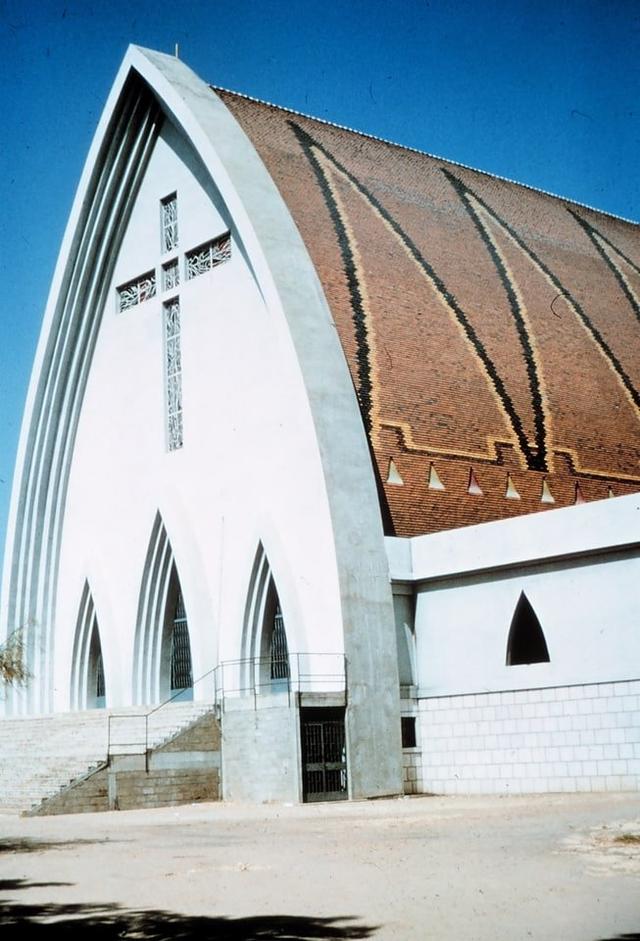

Zakouma National Park – Safari in the South
Located in southeastern Chad, Zakouma is home to elephants, giraffes, lions, and an array of birdlife. Once restored, it has become a focal point for wildlife enthusiasts seeking off-the-beaten-path adventure
Ennedi Plateau, Guelta d’Archei & Ounianga Lakes – Sahara Wonders
In northeastern Chad, these UNESCO-listed sites showcase spectacular sandstone formations, prehistoric rock art, and the dramatic Guelta d’Archei, a desert waterhole that shelters Nile crocodiles. The Ounianga Lakes offer striking natural beauty with brilliant colors that contrast sharply with the surrounding desert terrain
Douguia – River Life on the Chari
Located north of the capital on the Chari River, Douguia serves as Chad’s most active tourist gateway. Traditional canoe rides on the river allow visitors to observe hippos, birdlife, and riverside village scenes. It's a scenic and convenient escape from the capital .




Moundou – Industrial South & Craft Culture
Chad’s second-largest city, Moundou, is also an economic heartland with the well-known Gala Brewery, cotton production, and lively markets. The city presents a slice of southern Chadian life and offers cultural interaction through its Ngambai heritage communities




Accomodation
Guest houses
Guest houses in Chad offer affordable and welcoming accommodation for travelers seeking a more authentic and budget-friendly experience. In the capital, N’Djamena, options like Auberge du Pont and Mission Catholique Guesthouse provide clean rooms, basic amenities, and local hospitality at accessible prices. Outside the capital, cities like Sarh and Abéché also feature comfortable guesthouses that cater to visitors exploring regional culture and history. While amenities may be simple, the personal atmosphere, affordability, and opportunity to connect with locals make guest houses an excellent choice for those wanting to experience the real Chad.




Hotels and resorts
Chad offers a range of comfortable hotels and resort-style accommodations, especially in the capital city, N’Djamena. Top choices include international brands like Radisson Blu, Hilton, and Ledger Plaza, which provide high-quality amenities such as pools, fitness centers, and business facilities. Mid-range options like Hôtel La Résidence and Mercure Le Chari offer great comfort at more affordable rates. Most hotels cater to both business and leisure travelers, with prices ranging from $100 to $250 per night. While the country may not have traditional beach resorts, many hotels in N’Djamena offer a relaxing and upscale experience with excellent service, making them ideal for visitors seeking convenience and comfort in Chad.




Campings
Camping in Chad is ideal for adventurous travelers seeking untouched natural beauty. While facilities are limited, the country offers unique camping opportunities in places like Zakouma National Park, where guided safaris and secure bush camps are available, and the Ennedi Plateau, known for dramatic rock formations and prehistoric art—perfect for wild camping with a guide.
Most camping is self-supported, requiring you to bring your own gear, supplies, and possibly a 4x4 vehicle. Due to remote locations and safety concerns, especially in border areas, it's strongly recommended to camp with local guides or organized tours. With preparation, camping in Chad offers an unforgettable way to experience its vast landscapes, wildlife, and rich cultural heritage—far from the crowds.




Requirements for Visa
Documents to be submitted for your application
- Citizens of more than 15 countries—including Benin, Cameroon, Nigeria, Mali, Rwanda, and the UAE—can enter Chad visa-free for up to 90 days.
- Other nationalities can apply for a tourist or business e‑Visa for stays of up to 90 days, valid for single or multiple entries .
- In special cases (e.g. travelers from countries without diplomatic missions), a visa on arrival may be issued—but usually only with an official Entry Authorization letter obtained in advance.
Required Documents
- Passport: Valid for at least 6 months beyond your travel dates and containing 2 blank pages for stamps
- Passport Photo: One recent (2×2 in, white background) photo required for the e‑Visa or visa-on-arrival application.
- Travel Itinerary: Proof of return or onward flight booking .
- Accommodation Proof: Hotel reservation or host details during stay
- Yellow Fever Certificate: Mandatory if arriving from or through risk zones
- Proof of Funds or Invitation Letter: Depending on visa type and nationality
- Travel Insurance: Strongly recommended, especially for emergencies
Fees and Processing Time
- e‑Visa fees typically range from US $70 to $110 depending on duration and entry type
- Visa processing generally takes 3–10 business days if documents are complete
- Visa on Arrival fee is around US $70, but requires prior authorization (except for citizens of Benin)
Upon Arrival Requirements
- Police Registration: All visitors must register with the National Police within 72 hours of arrival and provide two passport-size photographs
- ID and Visa Presentation: Show your passport, visa (or entry stamp), and yellow fever certificate at immigration checkpoint.
Why Travel Planning Is Encouraged
With simplified procedures such as the Chad e‑Visa portal, travel to Chad has become more accessible. Whether you're planning for tourism, business, or research, understanding the process and preparing documents in advance will ensure a smooth entry experience and help you enjoy the country’s rich landscapes and cultural heritage with peace of mind.
Economy of Chad
Agriculture, forestry, and fishing
Chad’s economy remains deeply rooted in agrarian livelihoods, with around 70–80% of its population relying on subsistence farming, livestock herding, and fishing for their daily income and food security. The agricultural sector including crops, livestock, and fisheries contributed approximately 32% of Chad’s GDP in recent years, though some sources estimate the figure closer to 25% . This sector employs the vast majority of Chadians and includes major staple crops such as sorghum, millet, maize, groundnuts, yam, sugarcane, rice, cassava, sesame, and cotton; cotton remains the most important cash crop and export commodity.
Despite challenges, fisheries centered around Lake Chad and the Chari Logone river system support tens of thousands of families. Production ranges from 144,000 to 280,000 tons in good rainfall years. Historically, 60–70% of Chad’s annual freshwater fish catch was consumed locally, while 20,000–25,000 tons of dried or salted fish were exported to regional markets, especially in Cameroon and Nigeria.
Forestry remains under-developed but potentially valuable, covering roughly 3–8% of the national territory primarily in the southern Sudanian zone. Chad’s forests include species like gum arabic and shea trees, which have economic importance. However, the sector faces significant threats from deforestation driven by fuelwood collection, charcoal production, and farmland expansion, exacerbated by climate change and rangeland pressures. Annual deforestation and resource degradation are ongoing concerns, though gradual reforestation efforts are underway .
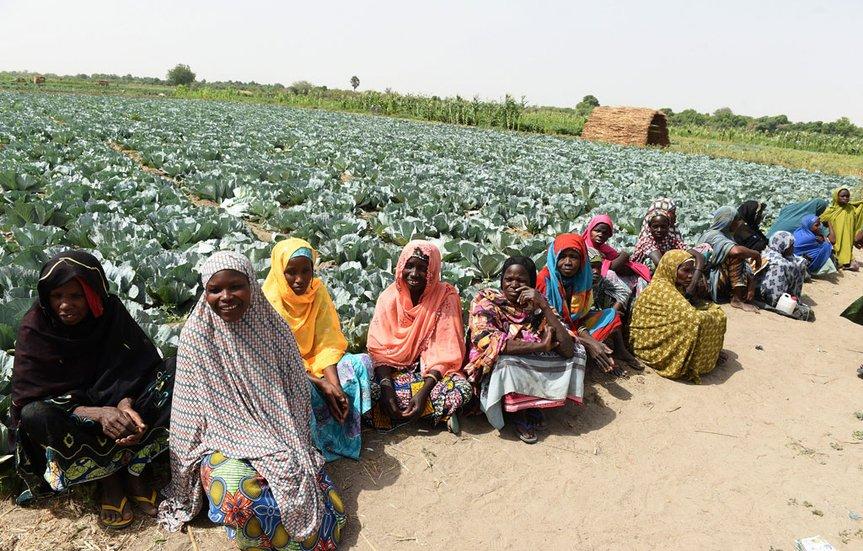
Resources and power
Chad is rich in natural resources, notably significant oil reserves that contribute heavily to its economy. However, electricity access remains very low, with only about 6–8% of the population connected, mostly in urban areas. The country relies predominantly on diesel and oil generators for power, but efforts are underway to expand renewable energy through solar and wind projects, including major solar farms near the capital and Chad’s first wind farm in Ennedi. Supported by international partners like the World Bank, Chad aims to increase electrification to over 50% by 2030 as part of its national development plan. While challenges remain, ongoing investments and infrastructure development are paving the way for a more sustainable and inclusive energy future in Chad.
Manufacturing
Chad’s manufacturing sector is small and underdeveloped, contributing only about 2–3% of the country’s GDP. It mainly focuses on light industries like cotton processing, sugar production, textiles, and brewing. Growth is limited by challenges such as poor infrastructure, unreliable electricity, weak financing, and a shortage of skilled labor. Despite this, the sector has potential especially in agro-processing and packaging supported by initiatives like the ZISARH industrial zone. With the right reforms and investment, Chad could gradually expand its manufacturing base and reduce its dependence on oil.

Finance
Chad’s financial sector is small and underdeveloped, with limited access to banking, credit, and insurance. Only a few commercial banks dominate the market, and microfinance institutions reach a small portion of the population. Financial inclusion remains low, with limited credit to the private sector and high levels of non-performing loans. However, Chad is working to improve its financial system through international support, including a $630 million IMF program and a national development plan aimed at boosting investment, expanding credit access especially for small businesses and promoting economic growth.

Trade
Chad’s trade sector is heavily reliant on oil, which makes up about 70% of its exports, alongside gold and agricultural products like gum arabic and cotton. In 2023, Chad exported around $3.7 billion and imported about $2.2 billion, resulting in a trade surplus. Key export partners include the UAE, China, Germany, and France, while major imports come from China, Turkey, and India, mainly consisting of machinery, vehicles, food, and pharmaceuticals. Despite a positive trade balance, Chad faces challenges such as limited export diversification, dependence on oil, and regional trade barriers.
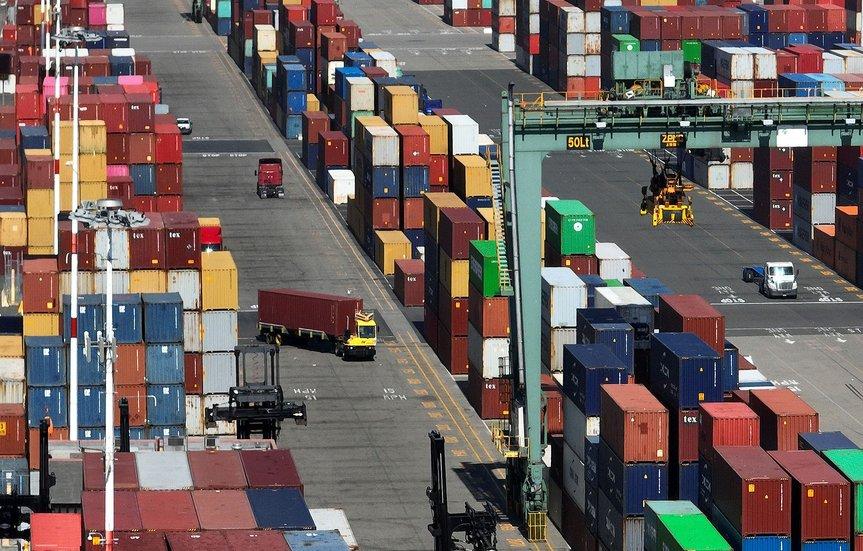
Labour and taxation
Chad’s labor force is mostly informal, with about 80% of workers employed in agriculture and limited formal job opportunities, especially outside urban areas. Labor unions exist but have low membership and influence. Employers contribute around 16.5% of salaries to social security, while employees contribute up to 3.5%. Income tax is progressive, ranging from 0% to 30%, and corporate tax rates range from 35% to 40%. The VAT is generally 18%, with some reduced rates and exemptions. Chad’s tax system is centrally managed, with regular filing and payment requirements. Ongoing reforms aim to improve tax compliance and support formal job growth.

Transportation and telecommunications
Chad’s transportation and telecommunications sectors are improving, though challenges remain. The country has limited paved roads and no railways, but it is part of major Trans-African highway projects and has several functional airports. In telecommunications, mobile coverage is growing, with 3G and 4G services expanding, especially in cities. Internet access is still low around 13–18% but improving thanks to fiber-optic projects, World Bank support, and the recent approval of Starlink satellite services. These developments are helping Chad gradually boost connectivity and support economic growth.

Latest News in Chad
Politics
The first president of independent Namibia, Sam Nujoma, has died at the age of 95 in the capital Windhoek, the country's current leader has announced.
Politics
Ugandan President Yoweri Museveni has officially announced his intention to seek re-election in the 2026 presidential race, extending his nearly four-decade rule. Museveni, who has been in power since 1986, is once again positioning himself as the steady hand guiding Uganda through challenges. His decision has sparked mixed reactions, with supporters praising his leadership and longevity, while critics call for fresh leadership and political reform. As the nation looks ahead to the 2026 elections, Uganda braces for a heated political contest.
Politics
Peace Agreement with DRC Rwanda and the Democratic Republic of Congo (DRC) signed a U.S.-brokered peace deal aimed at ending conflict and promoting regional trade. Rwanda agreed to stop supporting armed groups like M23 rebels, though it denies involvement. Tensions remain, and President Kagame is cautious about whether the peace will last.
Wildlife
Tanzania has announced that all foreign tourists visiting Mainland Tanzania will be required to purchase a mandatory travel insurance policy upon arrival, beginning January 2026. The new regulation, issued by the Ministry of Finance on July 4, 2025, is part of the government reforms in the country’s 2025/26 financial year agenda. According to the notice, the measure will apply to all non-citizens, with the exception of visitors from countries that are part of the East African Community (EAC) and the Southern African Development Community (SADC). Citizens from these regions will continue to be exempt from the requirement.
Environment
In light of the growing food insecurity crisis across many African nations, heads of state and agriculture experts gathered in Nairobi, Kenya, this week to discuss solutions to address food shortages, especially in regions severely affected by climate change, political instability, and economic challenges. The two-day summit, titled “Agriculture and Climate Resilience: A Pan-African Strategy”, brought together government officials, NGOs, scientists, and international organizations to create a comprehensive strategy to improve agriculture, nutrition, and sustainable food systems across the continent.
Tech & Science
In 2025, Artificial Intelligence (AI) isn’t just a futuristic buzzword - it’s the secret weapon behind some of the world’s most successful content creators. From bloggers and YouTubers to podcasters and marketers, AI-powered tools are changing the way we brainstorm, write, design, and edit. If you've ever struggled with writer’s block, lacked design skills, or wished for faster content creation - AI might be your best assistant yet. Here’s how AI is revolutionizing the creative industry and how you can use it to boost your projects.
